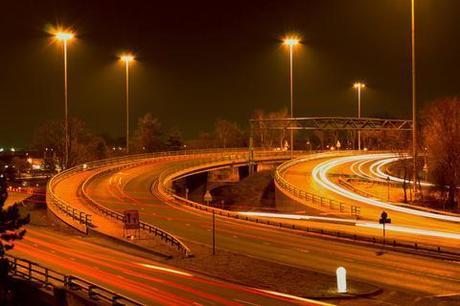“At moments like this the County sits in the palm of my hand, or it hangs suspended in the cortex. At other times it is a wild vicious thing: squashed insects on summer bitumen; dead souls trapped in pre-stressed concrete; sadness floating across wind-hacked sportsfields on lonely winter rambles. The county is both an intimate friend and a threat. It is the sparkle of sunlight on red suburban rooftops on spring mornings. It is compressed decades of endless car journeys down the A406 North Circular – drivers farting languidly in their Ford Capris.”

Papadimitriou calls himself a ‘deep topographer’, which is indistinguishable from being a psychogeographer except that it sounds marginally more marginal. Or perhaps I should say liminal, as it is London’s liminal spaces that are the focus of many of these wandering wordsmiths’ obsessions. Papadimitriou’s thing is the Middlesex-Hertfordshire borderlands of far North London. He’s quite taken with the local sewage systems and old hospitals (as seen in the two Middlesex County Council Public Information films he screened at yesterday’s event, which can be viewed at the bottom of this post.) It is this rich wasteland which is the subject of his book Scarp.
Like the idea of travelling by foot? Here are Nick Papadimitriou’s 6 top tips to kickstart your deep topography experience…
- Go walking. Stay away from bright lights.
- Explore second hand bookshops. Buy books on topography – on areas, regions, counties. Study them. Then walk around and see whether you can make sense of the present landscape in relation to the past. This way you’ll get more tension and depth in your engagement with the landscape.
- Go out on your own without any maps and without a digital camera. Digital cameras are the death of the imagination.
- Go in any direction that suits you. Go in unfamiliar directions. Go in familiar directions and try and see things in a new way.
- Develop a sense of contours. They tell you a lot about the tensions and releases of the landscape and the way the ancillary aspects if the landscape (such as sewage and drainage systems) are organised. It will build up your sense of place.
- Develop a poetry out of the commonplace. The two aren’t opposites. The inexplicable and the obvious reside alongside each other.
And here are some of the films he screened and recommended at yesterday’s event. If slightly dry but surpisingly interesting vintage public information films do it for you, this stuff will rock your world:
Thanks to event organisers London Short Film Festival for inviting me to host the Q&A.
